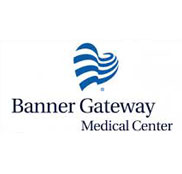Atrial Fibrillation
What is atrial fibrillation/flutter?
The two upper chambers of your heart are called the ‘atria’. Irregular, very quick contractions are called ‘fibrillation’; thus, atrial fibrillation refers to problems with the rhythm or rate at which your heart beats. Atrial fibrillation causes poor blood flow throughout the body’s circulatory system.
What are the causes of atrial fibrillation?
Your heart’s electrical system controls the rhythm and rate at which it beats. With each beat, an electrical signal courses from the top of your heart to the bottom. The walls of the ventricles (lower heart chambers) and atria are made entirely of muscle. With each electrical impulse, these muscles tighten, making a heartbeat. As the muscles tighten, the chambers squeeze closed and push out the blood contained within.
During each heartbeat, these contractions are precisely synchronized; the two upper chambers (the atria) contract, followed by the two lower chambers (ventricles) contracting. When disorganized, rapid electrical impulses overrun regular, normal electrical signals, atrial fibrillation occurs; the upper chambers start to beat chaotically, no longer coordinated with the beating of the lower chambers.
When this occurs, blood flow pumped into and out of the ventricles regulated by random atrial beats. The body may get a series of quick, small amounts of blood followed by occasional larger amounts of blood. The quantity depends upon how much blood each irregular beat can push from the atria to the ventricles.
What are the common signs and symptoms of atrial fibrillation?
Atrial fibrillation can take place without any outward signs or symptoms. For the most part, atrial fibrillation symptoms include fainting (syncope), nausea, and shortness of breath, fatigue, palpitations, dizziness, and weakness. When the heart beats very rapidly, it may be unable to pump enough blood to meet the body’s needs, causing chest pain or heart failure.
For those who suffer from an additional underlying heart problem or have a limited tolerance for exercise, symptoms may develop rapidly. Despite the absence of any apparent symptoms, atrial fibrillation can increase your risk of a stroke, i.e., the sudden death of brain cells when they are deprived sufficient oxygen-rich blood. The frequency with which stroke occurs among people who suffer from atrial fibrillation can be as much as seven times that of the general public, depending upon the presence of additional risk factors such as high blood pressure.
Is there more than one type of atrial fibrillation?
There are three types of atrial fibrillation: paroxysmal, persistent and long-standing persistent.
What characterizes paroxysmal atrial fibrillation?
Paroxysmal atrial fibrillation is characterized by the occurrence of abnormal electrical signals in the heart and an accelerated heart rate which begin and stops suddenly without treatment. Severe or mild symptoms may accompany each episode. Symptoms may continue for a few seconds, several minutes, for hours, or even for several consecutive days.
What is persistent atrial fibrillation?
Persistent atrial fibrillation can only be stopped if the patient receives treatment.
What is long-standing persistent atrial fibrillation?
Long-standing persistent atrial fibrillation is characterized by the inability of the usual treatments to return a chaotic heart rhythm to normal. Paroxysmal and persistent atrial fibrillation can occur more frequently than long-standing persistent atrial fibrillation. Both paroxysmal and persistent atrial fibrillation can develop into long-standing persistent atrial fibrillation.
Is atrial fibrillation/flutter dangerous?
Atrial fibrillation by itself is not life-threatening; nonetheless, it is a serious medical condition which may, in some instances, require emergency medical treatment. It can lead to blood clot formation inside a blood vessel, obstructing the flow of oxygen-rich blood through the circulatory system. That blood clot could travel to the brain, resulting in a stroke
What factors increase your risk of atrial fibrillation?
Atrial fibrillation most often occurs in individuals with cardiovascular diseases such as cardiomyopathy, coronary artery disease, and hypertension. Diabetics and those who have chronic lung disease also are predisposed to arterial fibrillation. It may also occur spontaneously in people whose hearts are normal in every other respect.
How is atrial fibrillation detected and treated?
Atrial fibrillation may be identified when the pulse is taken, and confirmed with an electrocardiogram (EKG.) Treatments commonly include medications and other interventions in an attempt to synchronize the heart’s electrical system. Sometimes atrial fibrillation is permanent, and medicines or other treatments are unable to restore a normal heart rhythm.
Is atrial fibrillation a common condition?
As many as 2.2 million Americans suffer from atrial fibrillation. Its frequency increases with age. A person who has atrial fibrillation can live a normal, active life. For some, treatment successfully restores their normal heart rhythms. In the case of permanent atrial fibrillation, treatment can help control symptoms and inhibit other complications. Treatment may include medical procedures, medicines, and lifestyle changes.











